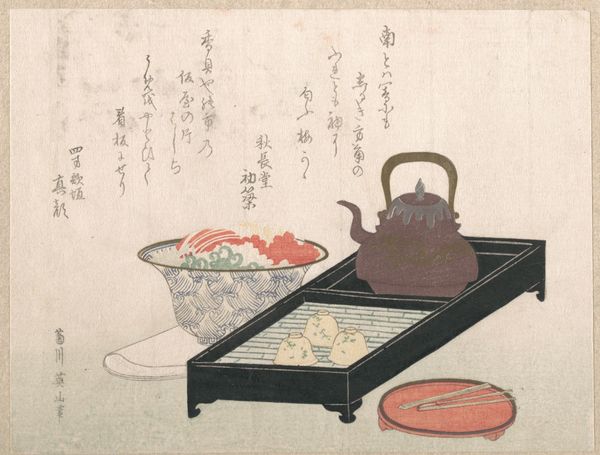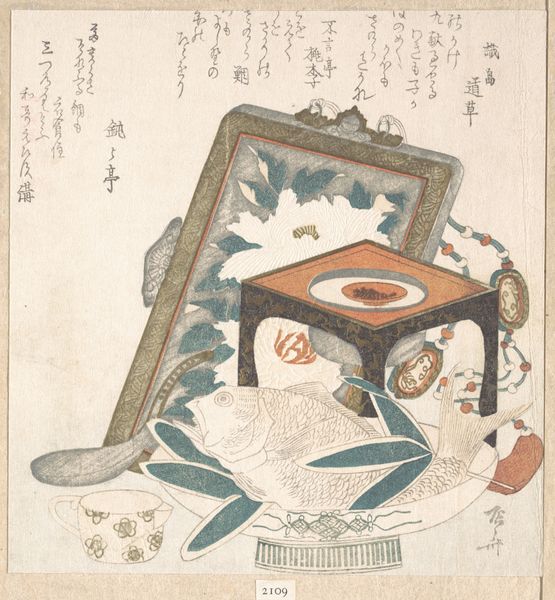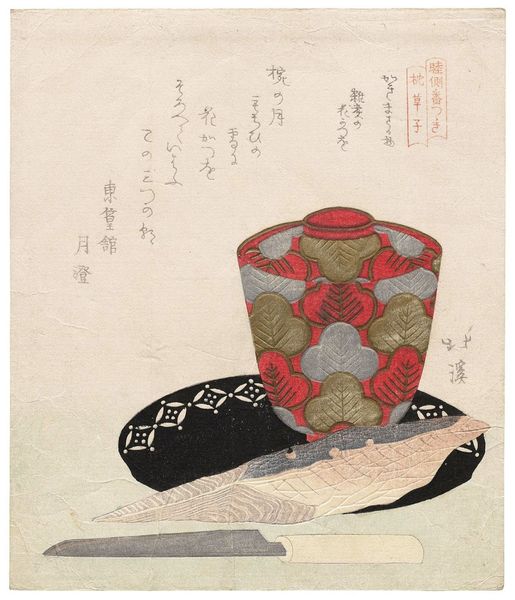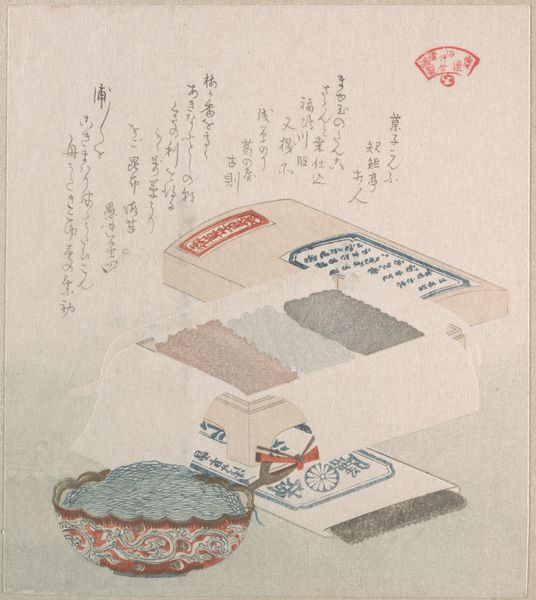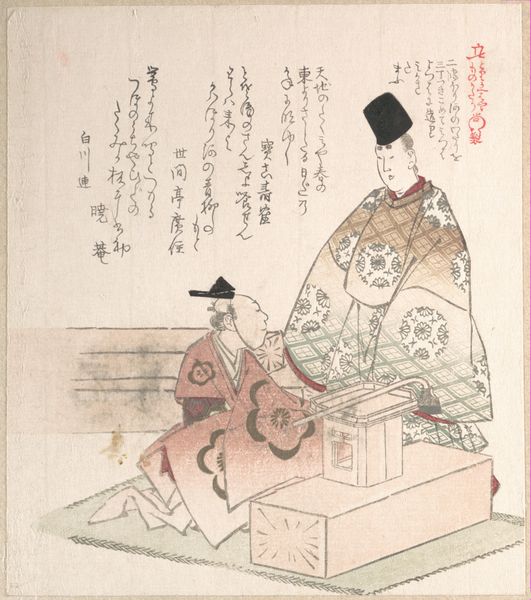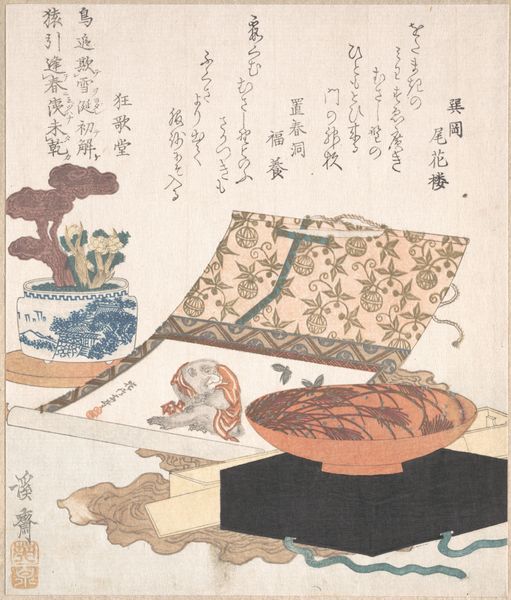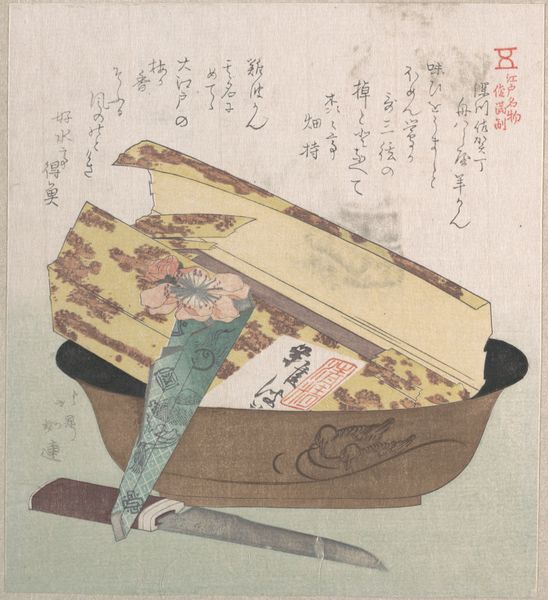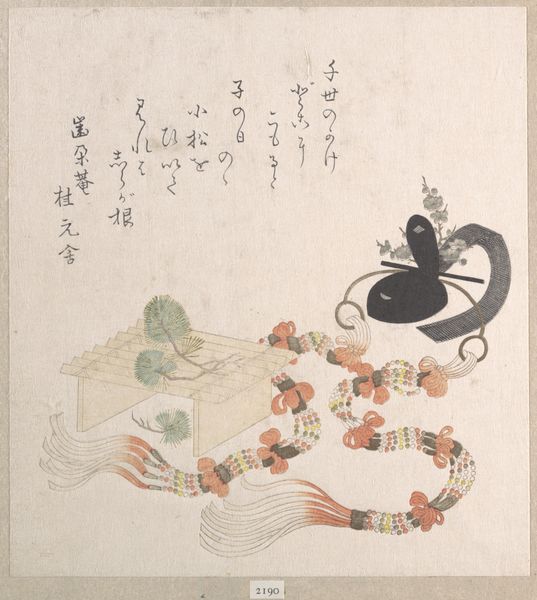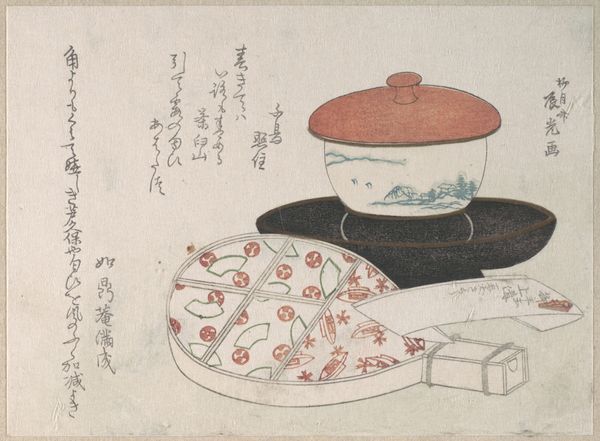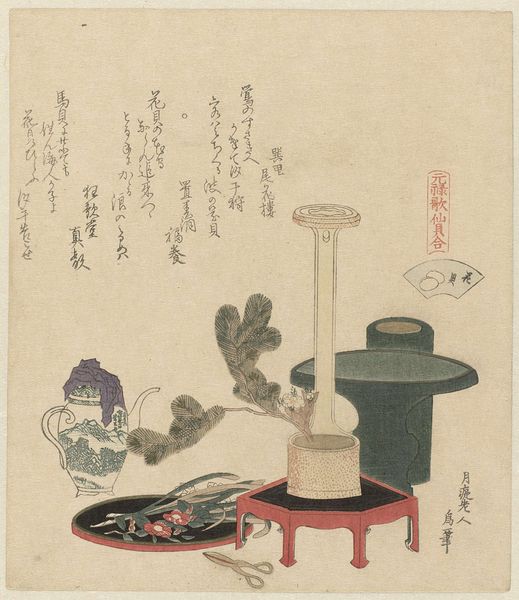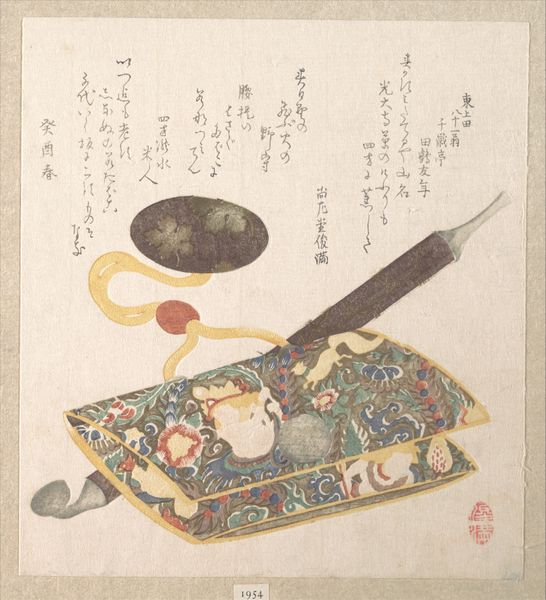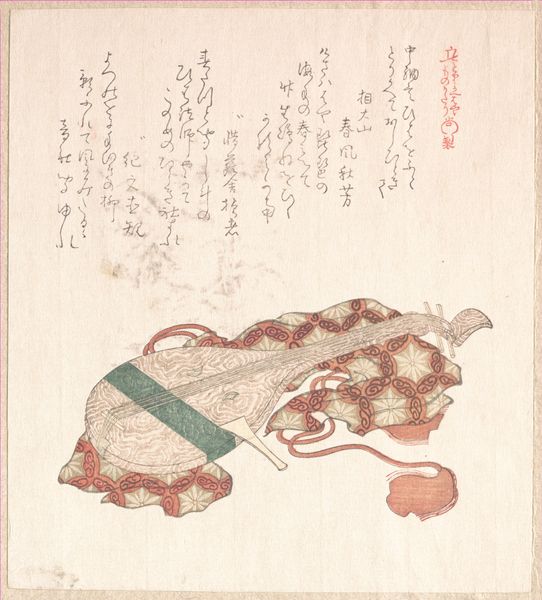
# print
#
asian-art
#
ukiyo-e
Dimensions: 8 1/4 x 7 1/4 in. (21 x 18.4 cm)
Copyright: Public Domain
Curator: Looking at this print, I'm struck by its sense of calm and preparation. The objects feel arranged with a quiet, ceremonial intention. Editor: Yes, it's a study in subtle contrasts. The muted palette emphasizes texture and form rather than overt visual spectacle. This is Kubo Shunman's "Wine-Set for the New Year Ceremony," a woodblock print from the 19th century in our collection. Examining the symbolism is very telling of Japanese traditions. Curator: Definitely, let's delve into those cultural roots. What sociopolitical climate may have informed Shunman's vision? Consider how social class and traditional expectations may inform this staging for an upcoming celebration, the way that the ruling class consume differently from the common classes. Editor: Well, the Edo period saw the flourishing of ukiyo-e prints catering to the rising merchant class, often depicting scenes of everyday life and leisure. New Year's held a special significance as a time for renewal and social cohesion. Shunman would likely have been tapping into that desire to uphold and promote an idealized version of these class roles through an aesthetic like this. The very medium itself - the woodblock print - was born out of the popular consumer culture of the era, connecting art to broader societal currents and political agendas through trade and governance of natural resources to print on and make paints from. Curator: I agree, that's where I am struck, too: How did that interplay with established artistic conventions? Ukiyo-e often featured stylized figures or famous landscapes, but here we see a focus on meticulously rendered objects that might challenge those established expectations of subject matter, to depict tradition on the stage. Editor: I’d argue that the arrangement has intentional significance. Notice the red lacquer plate offset against the dark kettle; and that elaborate container looming behind the setting. Curator: The use of color here seems symbolic. The careful details capture, say, the woven texture and rich hues of that lacquer container, indicating luxury items as a reminder of prosperity. I want to unpack the presentation as performative—New Year celebrations marked an intersection between social duty and communal expression for many communities! Editor: Absolutely. The ritual implied within this carefully laid-out scene evokes the politics of status. An almost photographic stillness transforms familiar things into powerful symbols to support the values that structure daily life for that social stratum. The objects tell a story. Curator: In conclusion, Shunman provides us with a glimpse into both material culture and performative social acts that reflect this moment in time through visual narratives! Editor: Indeed. Analyzing art helps unveil how culture shapes societal narratives within tangible traditions.
Comments
No comments
Be the first to comment and join the conversation on the ultimate creative platform.
